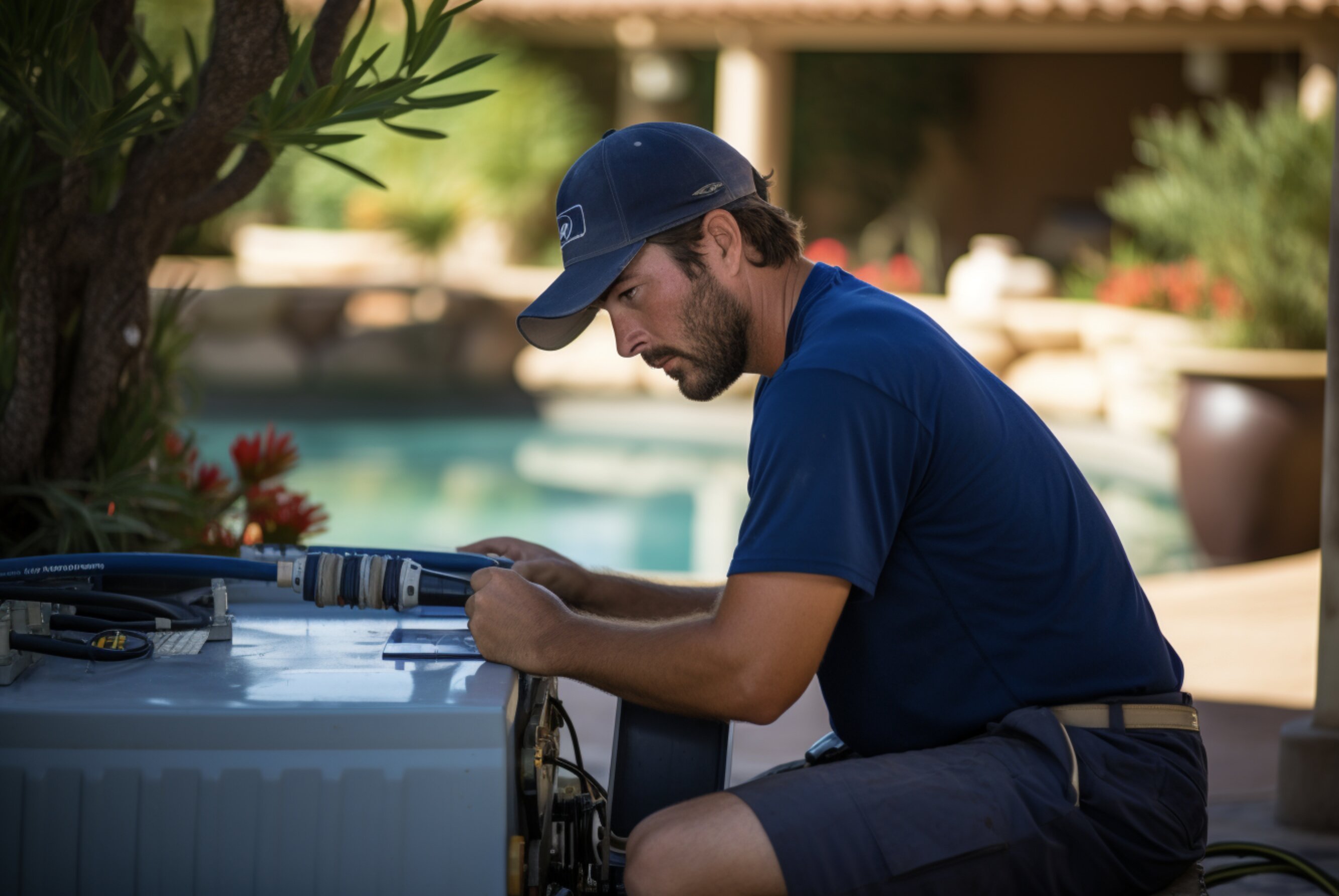Pumps and Filters: The Heart of Your Pool’s Circulation System
Efficiently running pumps and filters are crucial for keeping your pool water clean and your swimming experience enjoyable. By understanding the types of equipment available and establishing proper maintenance routines, you can extend the life of these vital components and ensure your pool remains in excellent condition.
Types of Pool Pumps and Filters
Pumps
The pump is the primary force moving water through your pool’s filtration system. There are three common types to choose from:
- Single-Speed Pumps: These traditional workhorses operate at a constant high speed and offer a reliable, if not energy-efficient, solution.
- Dual-Speed Pumps: These allow for high and low-speed operations, providing a middle ground between efficiency and power.
- Variable-Speed Pumps: The most energy-efficient option, these pumps can be adjusted to different speeds as needed, leading to significant cost savings over time.
Filters
There are three main types of pool filters, each with its own strengths:
- Sand Filters: These are low-maintenance and user-friendly. Water is pushed through a bed of sand that traps and holds debris.
- Cartridge Filters: Cartridge filters provide more surface area and greater filtration than sand filters. They are efficient, easy to maintain, and good for water conservation since they don’t require backwashing.
- DE (Diatomaceous Earth) Filters: These filters offer the finest level of filtration by using DE powder to coat the filter grids and trap particles as small as 2-5 microns.
Maintaining Your Pumps and Filters
Regular Inspections
Regular inspections can identify potential issues before they become major problems. Check your pump’s O-rings and gaskets for leaks or wear and tear, as these can significantly affect performance.
Clean and Prime the Pump
Regularly clean out your pump’s basket and make sure it’s properly primed with water—running a pump dry can cause damage. For proper priming, fill the pump basket with water, secure the lid, and start the pump, ensuring there are no air leaks.
Backwash Sand and DE Filters
Both DE and sand filters need backwashing to remove trapped debris from the filtration system. This is typically necessary when the pressure gauge reads 8-10 psi over the clean, starting pressure. However, over-backwashing can waste water and reduce the effectiveness of the filtration media, so do it sparingly.
Clean or Replace Cartridge Filters
Cartridge filters don’t require backwashing. Instead, the cartridges should be removed and cleaned with water from a garden hose every few months, depending on usage. Replace the cartridges every 1-2 years or when you notice a decrease in performance.
Recharge DE Filters
After backwashing a DE filter, you’ll need to add fresh diatomaceous earth to the system to “recharge” the filter grids.
Regular Scheduled Maintenance
Scheduling regular maintenance is key to the performance and longevity of your pool equipment. Set reminders to check on these components, especially during peak usage times.
By following these guidelines, you can keep the heart of your pool’s circulation system—the pumps and filters—in prime working order. Don’t forget, if you’d rather leave the technical maintenance to the professionals, you can always find a reliable service on our pool service recommendation page, ensuring that your pool remains a healthy and enjoyable environment.


